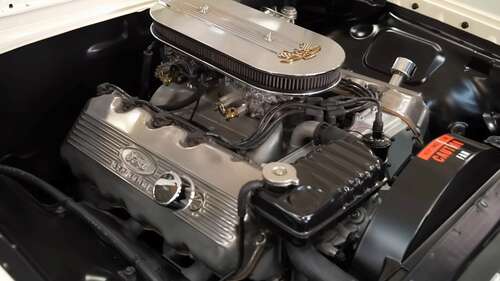
In the wake of its humiliating loss to the three Mopar drivers, Ford’s development team jumped into high gear to produce an engine capable of competing with the legendary Chrysler HEMI. The automaker’s answer was a 7.0-liter, 426-cubic-inch displacement engine. It used the same block as Ford’s earlier 427 FE V8 but incorporated numerous performance upgrades to improve power output. Some of those upgrades included an enhanced lubrication system, modified main bearing caps, and an extra idler gear added to the camshaft. However, the most significant change came in the form of the dual-valve, single-overhead camshafts and the six-foot timing chain that spun them. The SOHC design enabled Ford to improve engine performance by enlarging the intake and exhaust valves, allowing more air to enter the combustion chamber at one time while simultaneously allowing more exhaust fumes to escape.
The result of Ford’s three-month endeavor was a 616-horsepower Mopar-destroyer. However, while Ford succeeded in building an engine capable of competing with the Chrysler HEMI, NASCAR had other plans. In October 1964, NASCAR made the decision to ban “special racing engines,” including the Chrysler HEMI and the Ford 427 SOHC motor. The Mopar team decided to boycott NASCAR in protest. Ford, on the other hand, continued to compete with its old 427 engine while exploring alternative applications for the powerful Cammer.

